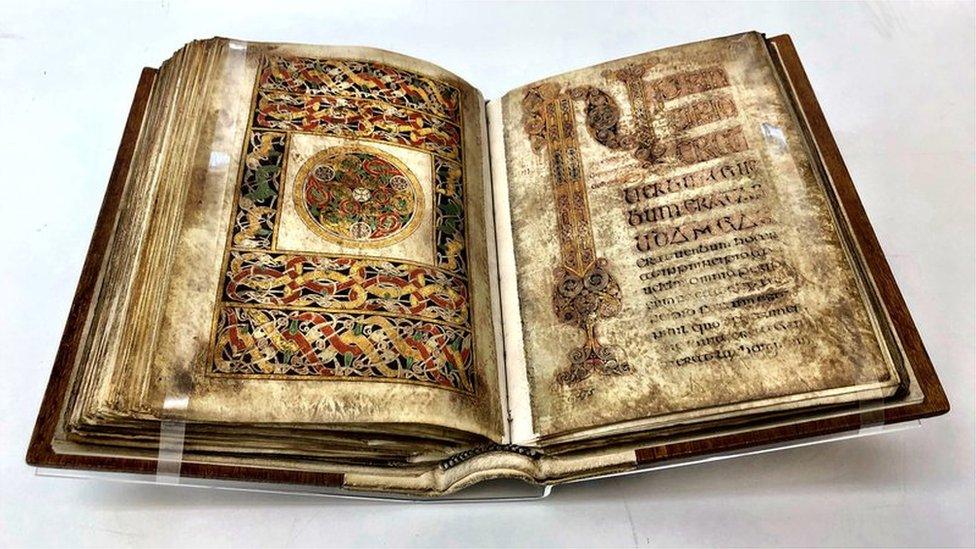St Colmcille: Remembering a lesser-known saint
- Published
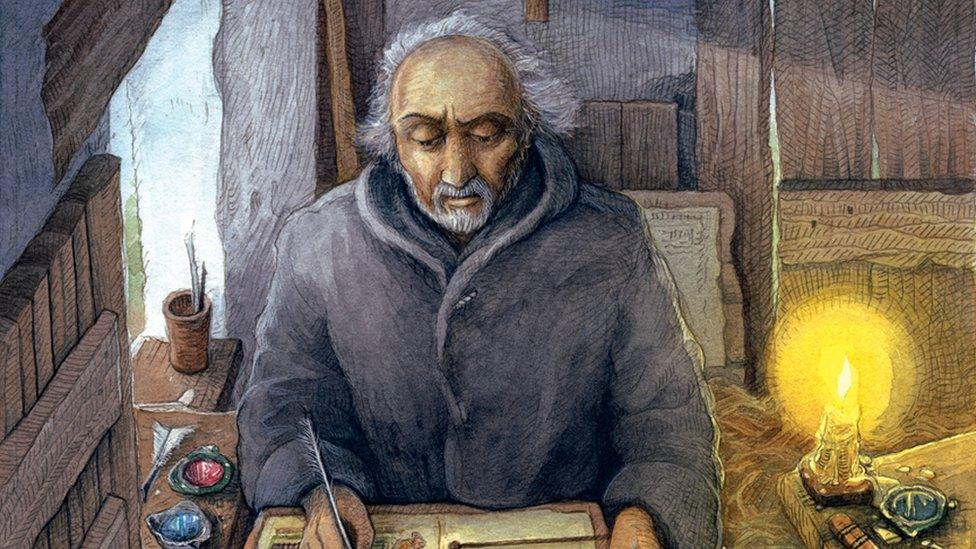
Accounts written about 100 years after Columba's death describe him sitting writing in a wooden hut on Iona
Ask anyone around the globe who is the patron saint of Ireland and you can expect to be answered definitively and quickly.
Thousands at home and millions abroad celebrate the life and legacy of St Patrick every 17 March.
But perhaps it is fitting that as a land feted for its saints and scholars, Patrick is not alone in having national patronage.
Now there are moves afoot to honour arguably - at least in the country of his birth - the lesser known of the emerald isle's saintly trinity, some 1,500 years after his birth.
Colmcille, meaning "the dove of the Church" in Gaelic, or Columba was born at Gartan in County Donegal in 520 or 521.
With St Patrick and St Brigid, he is honoured as one of his homeland's patron saints.
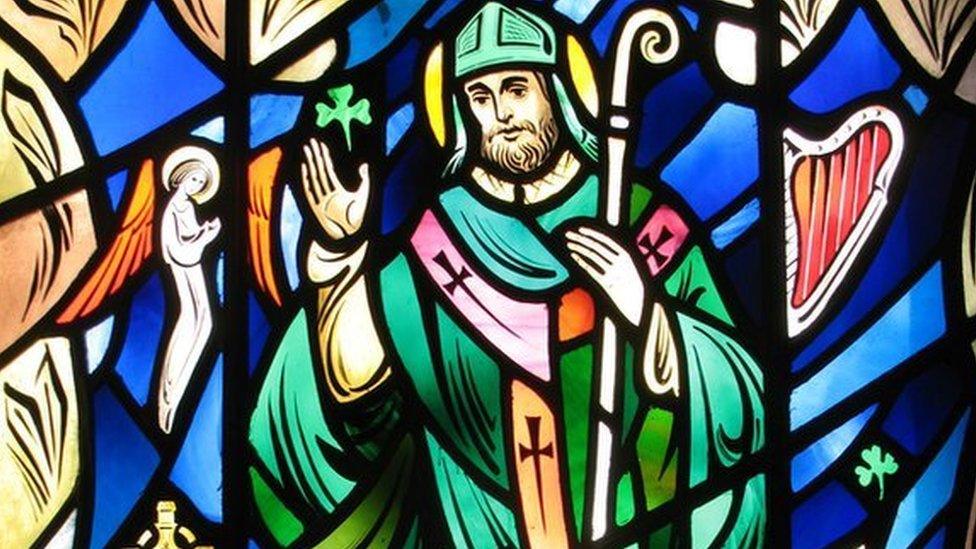
St Patrick is remembered across the world for his missionary work in Ireland
"St Patrick wasn't Irish, almost certainly he was British. St Brigid, we aren't overly sure if she even existed as a real person," argues historian and Columba expert Dr Brian Lacey.
"She may have been a Pagan goddess who was translated to become a Christian saint.
"But Colmcille was a genuine historical person of which there is absolutely no doubt. He is a huge figure in our political, diplomatic, cultural, scientific, religious history and it is appropriate that he is remembered and honoured."
Founder of monasteries
Born into Irish aristocracy, Columba is said to have been a descendant of legendary Niall of the Nine Hostages.
Niall was a fifth century Irish warlord reputed to have fought against the Romans and armies of ancient Scotland, England and France.
In Ireland's north west, there are many sites associated with Columba.
It is said he founded his first monastery in what is now the modern day city of Londonderry or Doire Cholm Cille, in the year 545.
Dr Lacey said that establishing the facts of Columba's early life in Ireland are a challenge for historians.
It was not until about 100 years after his death that his life was documented by an abbot from Iona, Adomnán.
"The legend is that Derry was founded because of the monastery built by Colmcille but the earliest recorded account of Colmcille founding Derry's monastery dates to the 10th century, 500 years after the monastery was founded, Dr Lacey said.
"The early records specifically mention another person as the founder of Derry's monastery - a man called Fiachra, who was actually a cousin or nephew of Colmcille."
Medieval monasteries were not akin to those of modern day, Dr Lacey points out..
"In those days they were intellectual powerhouses - they were hospitals, hotels etc all rolled into one.
"Indeed, all those monasteries and churches founded at that time were essentially family businesses.

Columba's name lives on in many aspects of life in Derry
"So when we use the word 'monastery' we are referring to a major cultural and religious institution.
"I know the legend is strong about Colmcille founding Derry but the historical facts don't support that.
"But what we can say without any doubt is that the monastery was founded, if not by Columba himself then, certainly by relatives of his."
Irrespective, Derry is a city which also holds the saint as its patron.
Known as the city of the oak, it was given Christian roots by its Columban founders.
Its schools and churches, streets and parks, cultural and sporting clubs, bear his name still.
Columba is held in high regard by Protestants and Catholics alike.
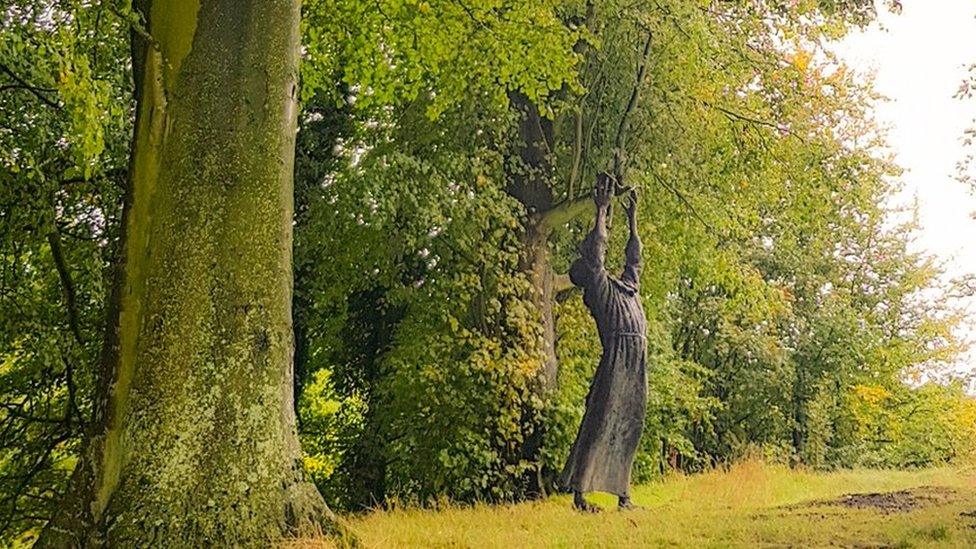
St Columba's statue was unveiled at St Columb's Park in Londonderry
The Return of Colmcille pageant stood out as the centrepiece of Derry's year as the inaugural UK City of Culture.
A massive Christ the Redeemer-esque statue of Columba was once mooted for the bed of the River Foyle.
And it is a city from which the saint, along with 12 monks, left bound for the Scottish island of Iona where much more is known and better documented about his life's work.
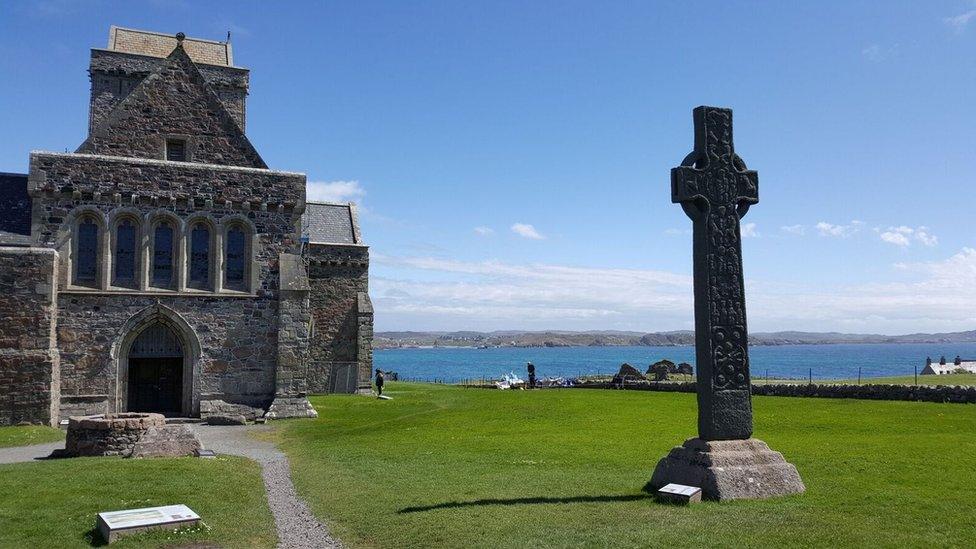
Iona remains an important place of pilgrimage, with tens of thousands of people visiting its Abbey every year
St Columba arrived on Iona from Ireland in the year 563.
He is widely credited as one of the key figures who brought Christianity to Scotland.
Columban missionaries, setting out from Iona, would found churches and monasteries all over western and northern Britain.
"Iona was one of the most important centres of religious life, cultural life, even of scientific life in this part of the world," Dr Lacey said.
"When he founded the monastery at Iona, one of the things they did there was they began to record Irish history, writing down events, battles here, foundation of a church there."
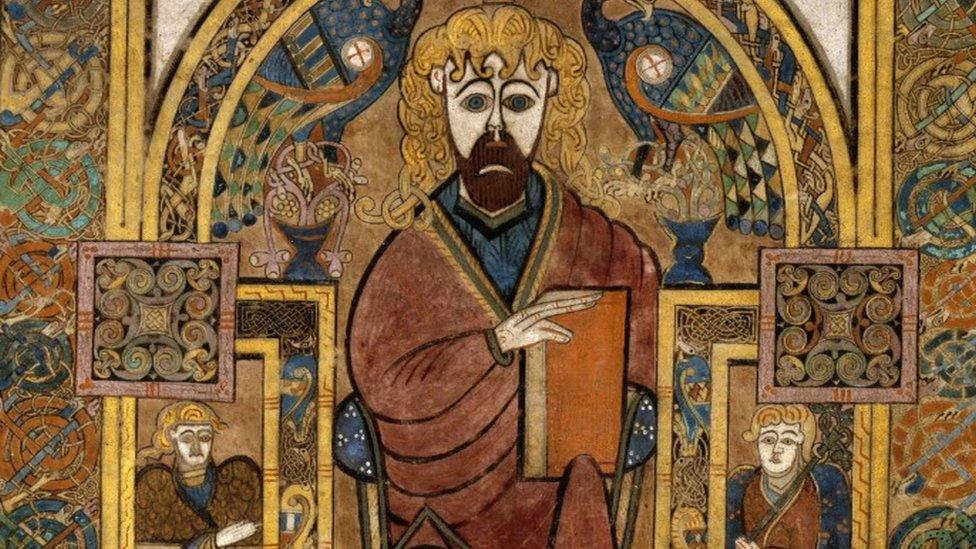
The Book of Kells was penned in Latin in the ninth century
"Almost all the history of Ireland and Scotland up until 740 AD we get from these chronicles invented by Colmcille and his followers on Iona. Without them we wouldn't have any Irish or Scottish history of that period," he said.
"He really was a most important individual and left behind huge cultural, historical and religious inheritance."
The Book of Kells and the Book of Lindisfarne are among the works attributed to Columban monasteries.
Were it not for the "complicated religious politics of the Middle Ages", argues Dr Lacey, Columba could well have been named Scotland's patron saint.
"He lost out to St Andrew, who of course was one of the apostles and who never visited Scotland."
Mythical meeting
It is even said Columba had the first encounter with the Loch Ness monster in the year 565.
According to the writings of Adomnán, the monster surfaced from the River Ness and darted towards Lugne, one of Columba's followers.
Columba is then said to have performed a miracle, saving Lugne and banishing 'Nessie' back into the river's icy depths.
This is the first recorded reference of the legendary Scottish beast which has gone on to become a world famous part of Scottish folklore and culture.
Now in Derry and Donegal, plans are being put in place to honour Columba to mark 1,500 years since his birth.
A series of public workshops have been held by local councils on how best to remember the saint.
Derry City and Strabane District Council said it wanted the public to help shape "a series of memorable events in 2020/21 that both celebrates and promotes our rich Columban heritage".
Northwest heritage
Dr Lacey said: "There are people in Tokyo, Moscow and all over the world studying Colmcille.
"His reputation spread across the world," he said.
- Published22 October 2018
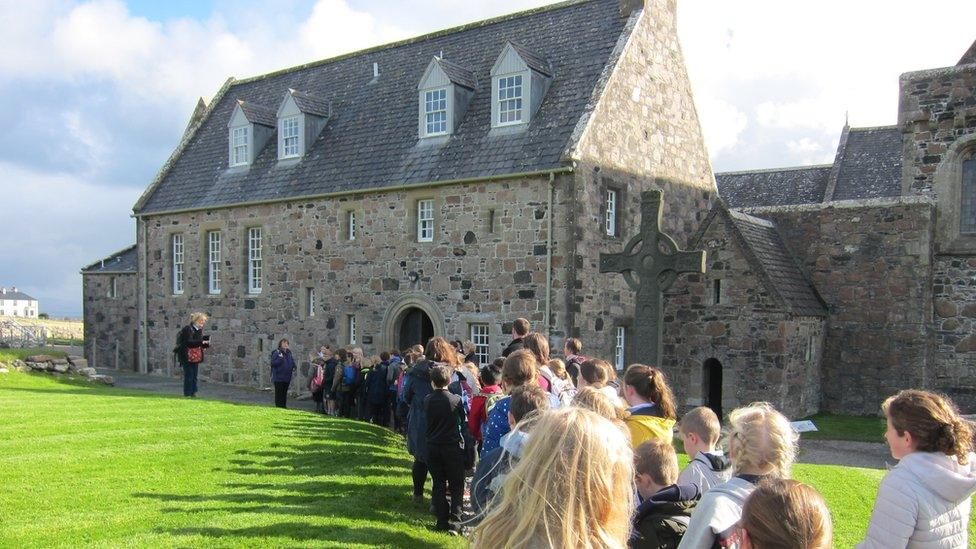
- Published20 September 2018
